
What makes a world-class CMO in 2021? And what makes them fail?
These days, it's hardly surprising to hear about CMOs coming and going at various companies.
In many companies, they’re viewed as the black sheep of the C-Suite – the one executive in the bunch operating with amorphous goals, responsibilities and unclear definitions of success.
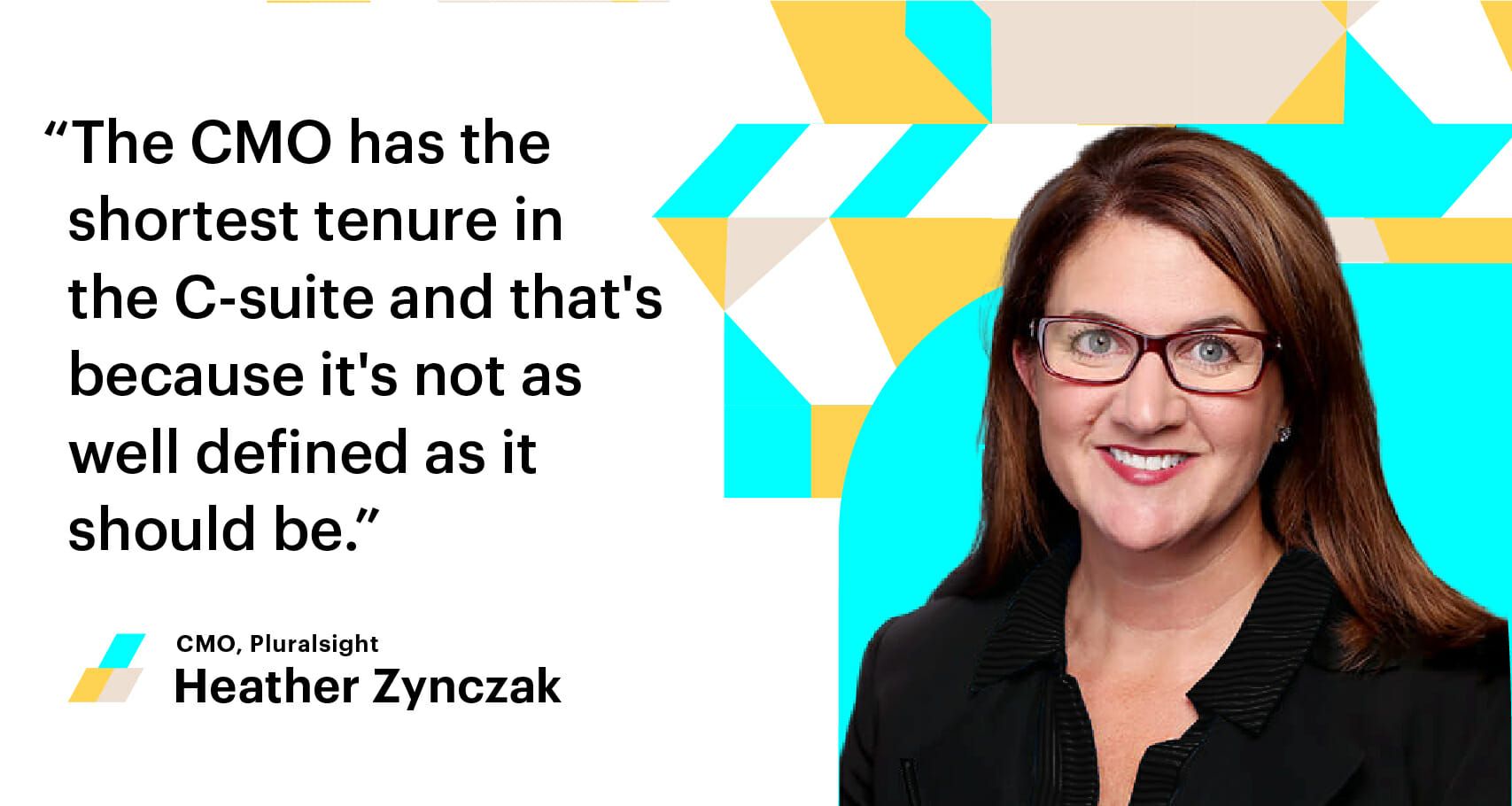
This is in large part a reflection of marketing today, a world where the scope of marketing activities has broadened significantly. From content marketing to paid digital, customer lifecycle marketing, events, and beyond, the number of B2B marketing tactics for any given campaign grows by the day.
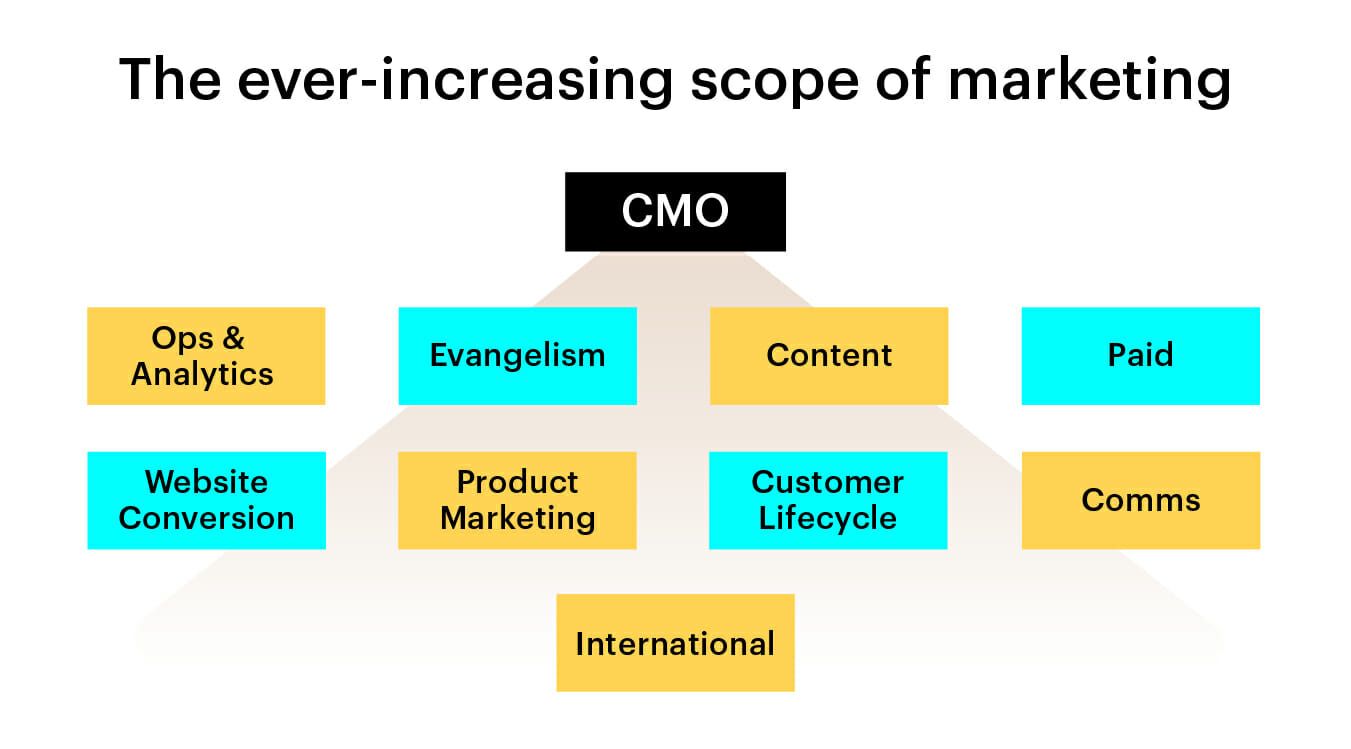
The ever increasing canvas that marketing operates within demands that a successful CMO be informed and adept at each. Of course, very few will be able to claim mastery in each discipline, so it’s vital that fast growing companies determine which disciplines are most important, given the goals and the stage of the business.
This refreshing, common-sense approach is one that has seen Heather Zynczak, CMO at Pluralsight, establish herself as one of the most successful CMOs in the industry to date. Over the course of her 20-year career in marketing, she’s built a series of highly focused, highly efficient marketing teams who are able to have the most leverage in growing a business, and avoid some of the most common traps CMOs fall into.
We sat down with Heather to get her take on what it means to be a CMO in 2020. You can listen to our full conversation above, or read Heather’s insights below.
This is episode three of Scale, a brand new podcast series on moving from startup to scale up. If you enjoy the conversation and don’t want to miss the rest of the series, just hit subscribe on iTunes, stream on Spotify, Stitcher, or grab the RSS feed in your player of choice.
Your Chief Marketing Officer is also your Chief Pipeline Officer
The B2B sales funnel used to be more simplistic: marketing was responsible for generating leads at the top and sales was responsible for catching them and closing the deal.
This model worked quasi-successfully for several decades, but over time a sizeable rift between the marketing and sales organizations has become more and more apparent: marketing had little insight into the kinds of leads that sales needed, and sales had little insight into how marketing was generating leads.
Nowadays, marketing teams are taking on more and more stages in the purchase funnel, stages that were previously owned by sales. As such, it means it’s likely that the prototypical CMO today needs a healthy dose of “sales DNA” to best serve their organizations.
Heather sees this as an opportunity to propel CMOs to a greater level of prominence in their companies over the long haul.
“The CMO has the shortest tenure in the C-suite and I think that’s because it’s not as well defined as it should be. I think a lot of companies struggle with what is the value that marketing is supposed to deliver. So I believe the role of marketing is to really understand what the company needs at that point in time and to deliver it. For 99% of the companies I talk to, the most important thing for them right now is revenue. And so for them the role of the CMO is to help fill the funnel, fill the pipeline, and bring revenue, help get revenue across the line. I’ve jokingly been called the Chief Pipeline Officer. So the way I think of marketing is this: marketing is what’s most vital to the company at that point in time. And 90% of the time it’s revenue.”
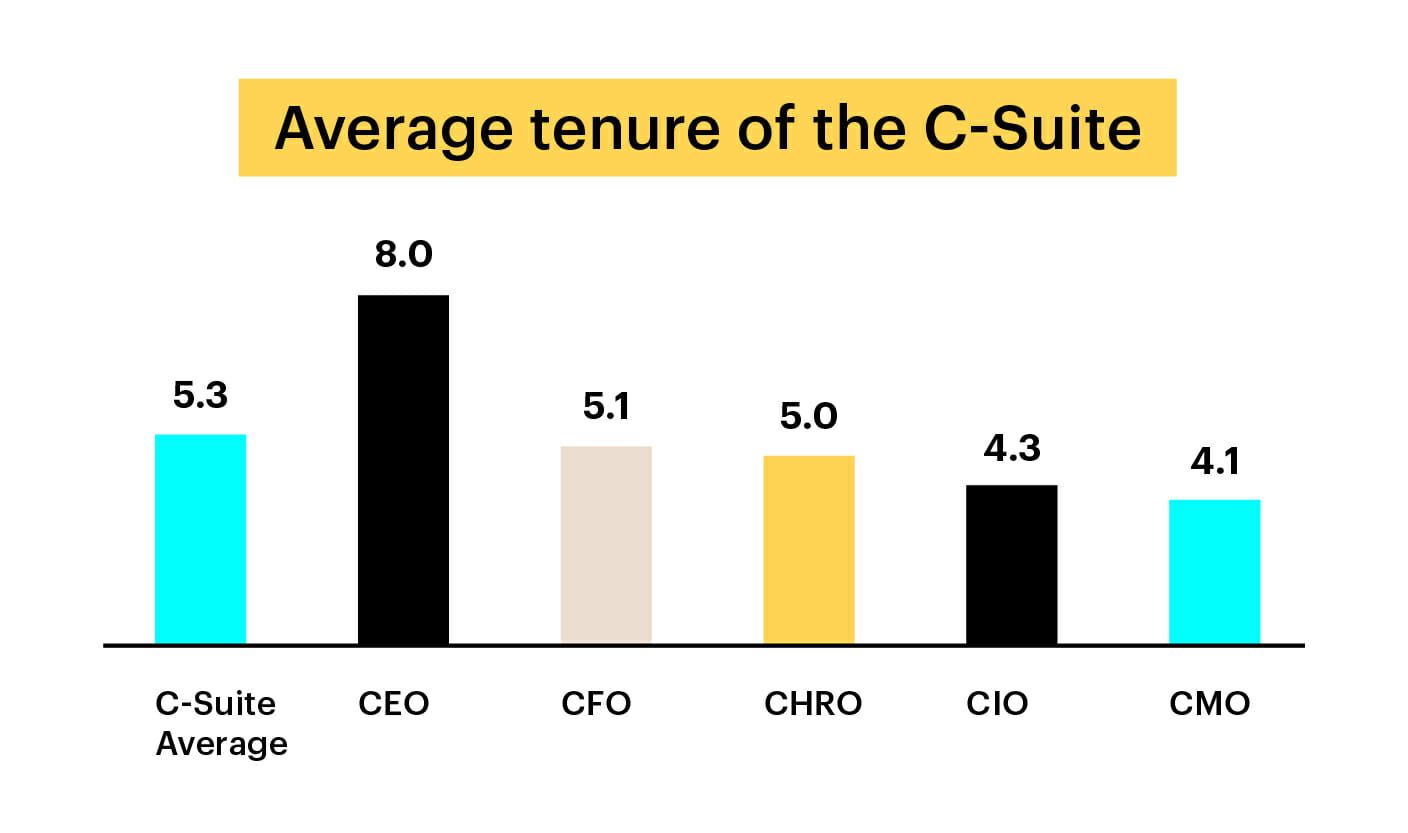
Source: Korn Ferry
Understand before being understood
In his book Good to Great, Jim Collins shares a memorable metaphor about leadership by comparing a business to a bus and the leader to a bus driver:
Most people think the job of the bus driver is to tell people on the bus where they’re going and set the course.
But actually, business leaders that go from good to great understand that the most important thing to understand isn’t the direction of the bus (e.g. the vision or direction), but who you’re bringing with you and what seats they’re in.
Here’s Heather’s take:
“If you’re going into a new organization, the most important thing you can do is listen. When I joined Pluralsight it was already a humming marketing org and I set up short meetings – 15 or 30 minutes – with every single marketer in the organization in the first three months I was there. And they weren’t interrogations like, “Tell me what you do for the company.” No, I just said, “Hey, this is your time. You can use it however you want. Tell me something you think I should know, or something you want me to know.” And in some cases it was about their personal life. One meeting they talked about their new baby, which was awesome. But other times I learned an invaluable amount about the organization by just listening.”
Having a technical marketing team is a non-negotiable
Increasingly, marketing relies on exceptional customer experiences, and software is way we create and deliver those experiences. It’s little wonder then that marketing technology is now the largest portion of total marketing budget (29% on average according to Gartner).
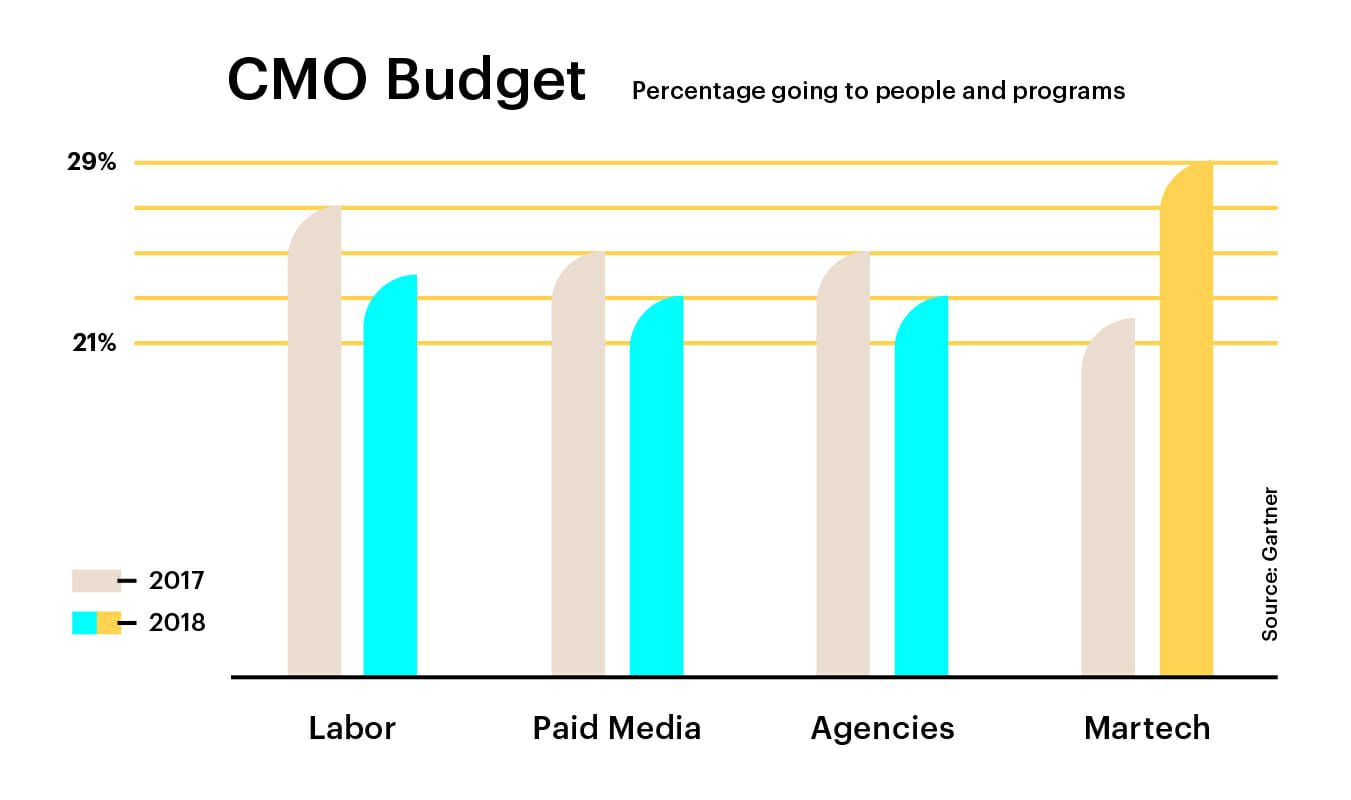
This has led to a growing population of data-driven CMOs who are more technologically sophisticated than in yesteryear. They rely on cold, hard, quantitative evidence to make decisions and investments, helping them deliver better ROI, more predictable growth and erase the stigma summed up by John Wanamaker’s legendary quote (“I know half of my advertising dollars are wasted, I just don’t know which half.”)
By eliminating some of the unpredictability of marketing, CMOs are making themselves more valuable to their organizations. It also means that the teams they’re looking to build are increasingly technical too:
“I think the biggest change in marketing organizations is the need for technical skills. The research shows that there’s at least seven touchpoints digitally before you’re willing to talk to somebody. Think about the last big thing that you bought. You research online, you subscribe to emails, you might watch a webinar, you’ll download a whitepaper. These touchpoints are all technically driven, so having the right people, with the right tech skills, is so important.
“There’s a CMO who I very much respect and she was switching from one CMO job to another, and I asked her what the negotiations were like. I expected her to talk to me about stock or compensation, and while I’m sure she asked for those things, she said, the biggest sticking point was that she wanted 10 more people for her tech team. She said, ‘I wasn’t gonna take the job unless I got 10 heads that were technically focused.’ This is the way modern marketing teams are. She knew to be successful, she not only needed the tech systems, she needed the people to run them. This technical aptitude is the foundation of marketing teams today.”
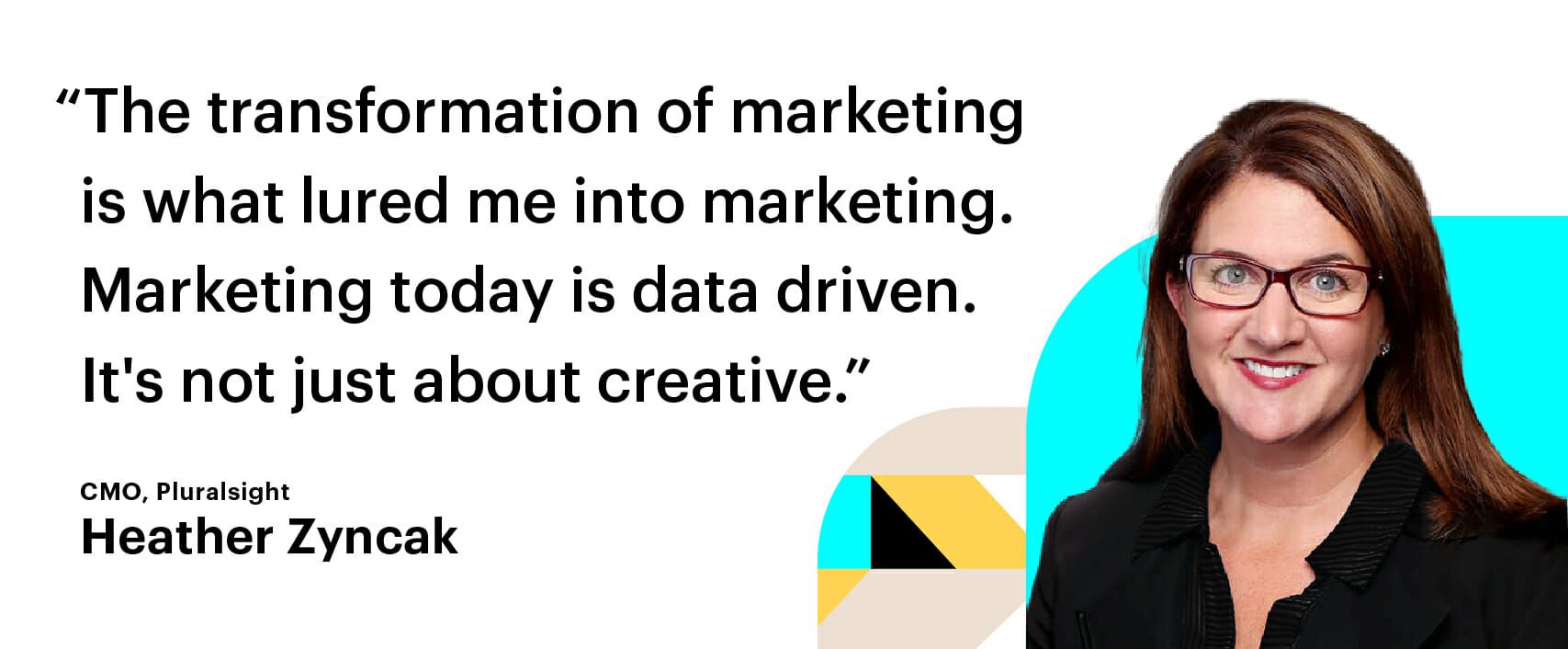
The infinite value of things that can’t be measured
“Show me the incentive and I’ll show you the outcome.” – Charlie Munger.
This quote goes straight to the heart of the challenge facing marketers today. Incentivized to contribute more and more towards revenue, marketers are leaning heavily towards tactics that can be directly attributed towards said revenue, and as a result end up starving the other marketing functions that are harder to track, like creating emotional marketing campaigns or growing the company’s brand.
Even as a self-professed data-obsessed marketer, Heather cautions against confusing marketing with lead generation. Yes, lead generation and revenue are important, but so too is brand, even if it’s harder to measure than more data-driven marketing tactics.
“I don’t think you can measure creativity. I always joke that good creative is like what the Supreme Court justice said about pornography, ‘You know it when you see it.’ It’s like art. It’s intended to elicit emotions you should have. So I don’t think the goal should be to measure creativity.
“If your marketing campaigns are terrible because you’re creative is terrible, or because your product marketing didn’t hit the right audience, or you don’t have the right message, then you’re gonna have a bunch of reporting about terrible marketing campaigns.”
The must haves for sales and marketing alignment
Sales and marketing have historically had a complex and sometimes contentious relationship.
In fact, a recent survey of more than 500 SaaS marketing leaders showed that only 22% claim to be fully aligned with their sales counterparts. But here’s the thing: if sales and marketing don’t work together like a well-oiled machine, you’ll have a real problem on your hands trying to scale. Building a scalable revenue machine requires cross-functional effort, one in which goals, numbers and systems are working towards one another, not against.
Heather explains it like this:
“If you have a wall between sales and marketing, you’re failing. In fact, this is why the CMO tenure is so short. There is no wall between myself and our CRO. We are attached at the hip, and we are partners, arm in arm on the same journey. One of the reasons I took the position at Pluralsight, one of many, is that our CRO, Joe, was interviewing at the same time. He and I talked on the phone and I made sure that the CRO was somebody that I could work with, and partner with because we have a common goal. If he fails, I fail. His success is my success. So if there’s a wall between sales and marketing, you’ve already lost the battle.”
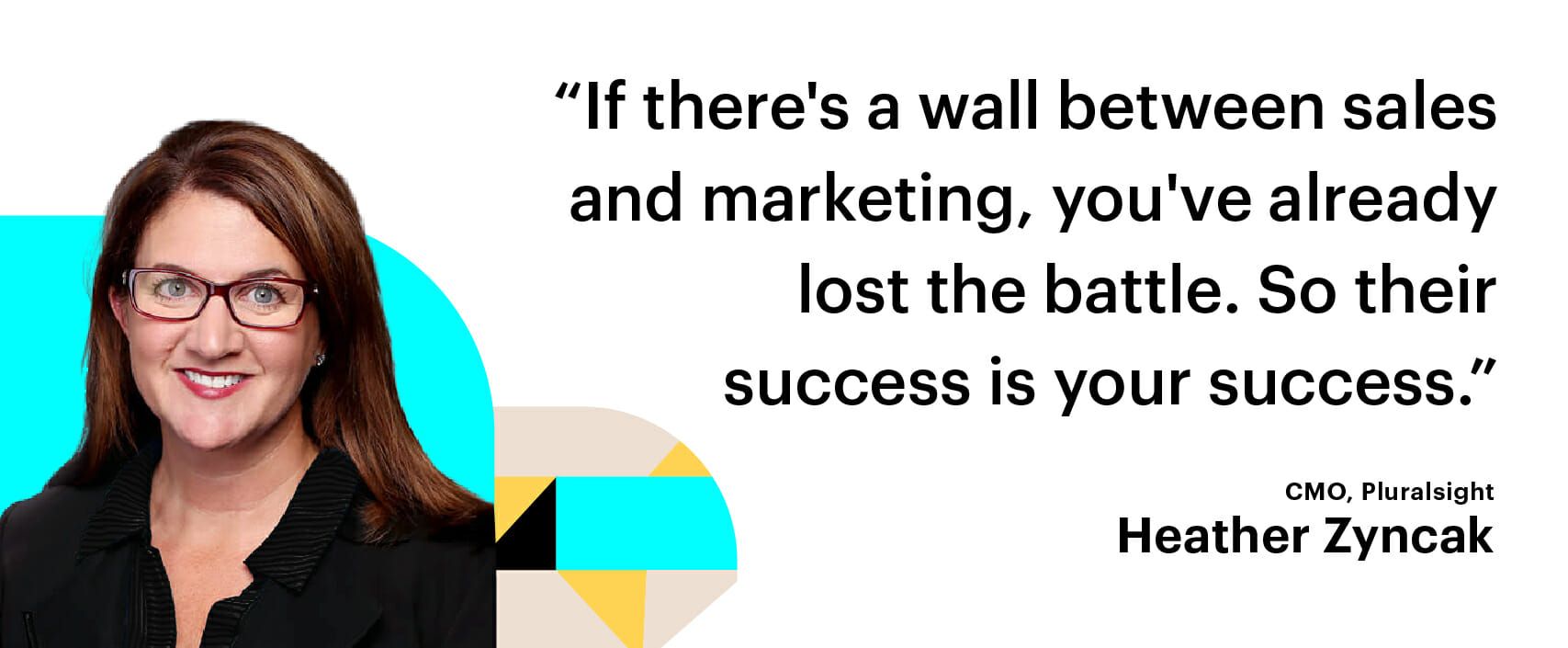
The path to becoming a CMO is a jungle gym, not a ladder
According to the memorable metaphor coined by Facebook COO Sheryl Sandberg, the age of the corporate ladder has been replaced by the era of the corporate jungle gym.
Nowhere is this clearer than in the path to being a CMO. Of all the roles in the C-suite, the CMO is the most widely varied role depending on the industry, sector and stage of company. There’s no clear path, and as a result you’ll find exceptional candidates who have come up from all different sorts of backgrounds: from sales, product marketing, growth or, like Heather, product and engineering.
“There are many different paths to become a CMO. You can come up through the creative side, through demand gen or through product and engineering like I did. There’s no one obvious path and it looks more like a jungle gym than a ladder. You can move back and forth and side-to-side before you get to the top.
“I would encourage others in a similar position to take risks, to try new roles and do something that constantly challenges you. For example, carrying a sales quota has been an amazing experience for me as a CMO. Building product was an amazing experience because I got to understand what it takes to get something out when we’re launching a product. So I would really encourage people to not be afraid to fail and try new things. If you want to be a well-rounded CMO, it’s not a straight path. So try different things.”
This post is part of Scale, a place where we explore how businesses are driving growth through customer relationships. Scale offers advice and guidance from support, marketing, and sales leaders who are charting new paths for their customers – and their companies.







